The Inpatient Prospective Payment System (IPPS) Proposed Rule for Fiscal Year 2026 was displayed on April 11, 2025, and will be published on April 30, 2025. The IPPS Proposed Rule FY 2026 projects a 2.4% increase in operating payments for acute care hospitals and revisions to the IPPS market basket to reflect a 2023 base year.
The Centers for Medicare and Medicaid Services (CMS) expect the proposed changes for FY 2026 to increase by $4 billion for hospital payments. Additional payments for inpatient cases involving new medical technologies are also expected to increase by approximately $234 million.
Below are important dates to remember from the FY 2026 IPPS Proposed Rule:
- April 11th = the IPPS Proposed Rule was displayed
- April 30th = the IPPS Proposed Rule was published in the Federal Register
- June 10th = Public comments which include New Technology Add-on Payment (NTAP) are due to CMS
- August 1st = The IPPS/LTCH PPS Final Rule will be issued
- October 1st = Discharge dates on October 1st and after are applicable in the IPPS Final Rule
NTAP Background
Sections 1886(d)(K) and (L) of the Social Security Act establish a process of identifying and ensuring adequate payment for certain new medical services and technologies referred to as “New Technology.”
New medical technologies and services used in the inpatient setting may be eligible to apply for add-on payments known as NTAP.
Medicare makes a bundled payment for inpatient hospital stays under the Inpatient Prospective Payment System. The bundled payment covers costs of services performed in the inpatient setting which includes the patient’s room and board, the operating room time, the nursing services, the laboratory and radiology services and the supplies used. Most devices, supplies and drugs are covered in the bundled payment, but add-on payments are paid additionally for approved qualified new technologies and services.
CMS offers NTAPs to provide additional payments for eligible new medical services and technologies that are new, costly and offer substantial clinical improvement over existing treatments.
NEW ADD-ON PAYMENT APPLICATIONS FOR FY 2026
For Fiscal Year 2026, the Centers for Medicare and Medicaid Services (CMS) received nineteen traditional pathway applications, consisting of the following:
- Fourteen are reviewed in the proposed rule.
- Three were withdrawn.
- Two were ineligible and the FDA marketing authorization was not completed.
ADD-ON PAYMENT APPLICATION REQUIRED CRITERIA
The regulations for add-on payments for new technologies under the IPPS specify three (3) criteria that must be met to be eligible to receive add-on payments. The three (3) criteria are:
- Newness Criterion = The medical service or technology must be new.
- Cost Criterion = The medical service or technology must be costly such that the MS-DRG rate otherwise applicable to discharges involving the medical service or technology is determined to be inadequate.
- Substantial Clinical Improvement Criterion = The medical service or technology must demonstrate a substantial clinical improvement over existing services or technologies.
When applying for NTAP, there are certain new medical services and technologies that may be eligible under an alternative pathway. Alternative pathways apply to technology considered to not be substantially similar to an already existing technology and will not need to meet the substantial clinical improvement criterion under §412.87(b)(1). Alternative pathways are available for FDA-designed breakthrough devices, qualified infectious disease products (QIDPs) and limited population antibacterial drug (LPAD) pathway products.
ADD-ON PAYMENT APPLICATION TIPS
The NTAP application process takes place annually. Add-on payment applicants need to understand the NTAP process and must follow a distinct order when applying for add-on payment. Each application must meet specific eligibility criteria along with prior FDA approval by a specific deadline, just for starters. Below are some add-on payment application tips:
- Detailed process explanation, timelines, successful case studies and supportive stakeholders.
- Review supporting clinical evidence and assessing technology’s ability to meet criteria for clinical improvement.
- Calculating with supporting documentation of cost-threshold analysis.
- Prepare submission for NTAP application by listed due date.
- Attend CMS’s Town Hall meetings and applicable sessions announced by CMS.
RELEVANT ICD-10 CODES FOR CERTAIN FY 2026 NTAP APPLICATIONS
CMS has also provided the public with a list of relevant ICD-10 codes for certain FY 2026 New Technology Add-on Payment Applications. The complete file may be found on the CMS website labeled 2026-CMS-1833 P Table 10 Series. It’s highly recommended to review all three table numbers in their entirety. There are three specific table numbers:
- Table Number 10.1.A. = RECELL Autologous Cell Harvesting Device (consists of 450 ICD-10-CM codes)
- Table Number 10.1.B. = RECELL Autologous Cell Harvesting Device (consists of 44 ICD-10-PCS codes)
- Table 10.2. iFuse TORQ TNT Implant System (consists of 108 ICD-10-PCS codes)
SUMMARY OF NTAP TECHNOLOGIES IN FY 2026
The CMS website provides a summary of continuing, new, discontinued NTAP Technologies and highlights from traditional pathway applications in Fiscal Year 2026. The Continuing NTAPs in FY 2026 for selected technologies are located in Tables II.E-01.A. and II.E-01.B., which include:
- CASGEVY and LYFGENIA = gene therapies for sickle cell disease, with NTAP amounts up to $2.3 million.
- TriClip G4 = for mitral valve repair with NTAP amounts up to $26,000.
- EPKINLY and COLUMVI = for B-cell lymphoma with NTAP amounts up to $6,504.
The Discontinued NTAPs in FY 2026 are located in Table II.E-02. If the three-year anniversary of market entry occurs before April 1, 2026, technologies are discontinued. Examples of discontinued NTAPs include:
- CYTALUX (ovarian indication).
- GORE TAG Thoracic Branch Endoprosthesis.
- iFuse Bedrock Granite.
The highlights from FY 2026 Traditional Pathway Applications consist of detailed summaries for each technology in the Proposed Rule and MEARIS. An example is:
- AUCATZYL (obecabtagene autoleucel) = A CAR-T cell therapy for relapsed/refractory B-Cell Acute Lymphoblastic Leukemia (B-ALL)
- FDA approved in November 2024
- Uses new ICD-10-PCS codes XW0338A and XW0438A
- Other applicants include novel biologics, implantable devices, and diagnostics, each evaluated against the newness, cost, and clinical improvement criteria.
Find out more about the Understanding NTAP: Its Role and Significance in Hospital Reimbursement in our On-Demand Webinar. Learn more and/or register now to join us.
Related Resources:
- Medicare Electronic Application Request Information System (MEARIS) NTAP Public Application Summaries
- CMS NTAP
- CMS FY 2026 Hospital IPPS and LTCH PPS Proposed Rule CMS-1833-P Fact Sheet




